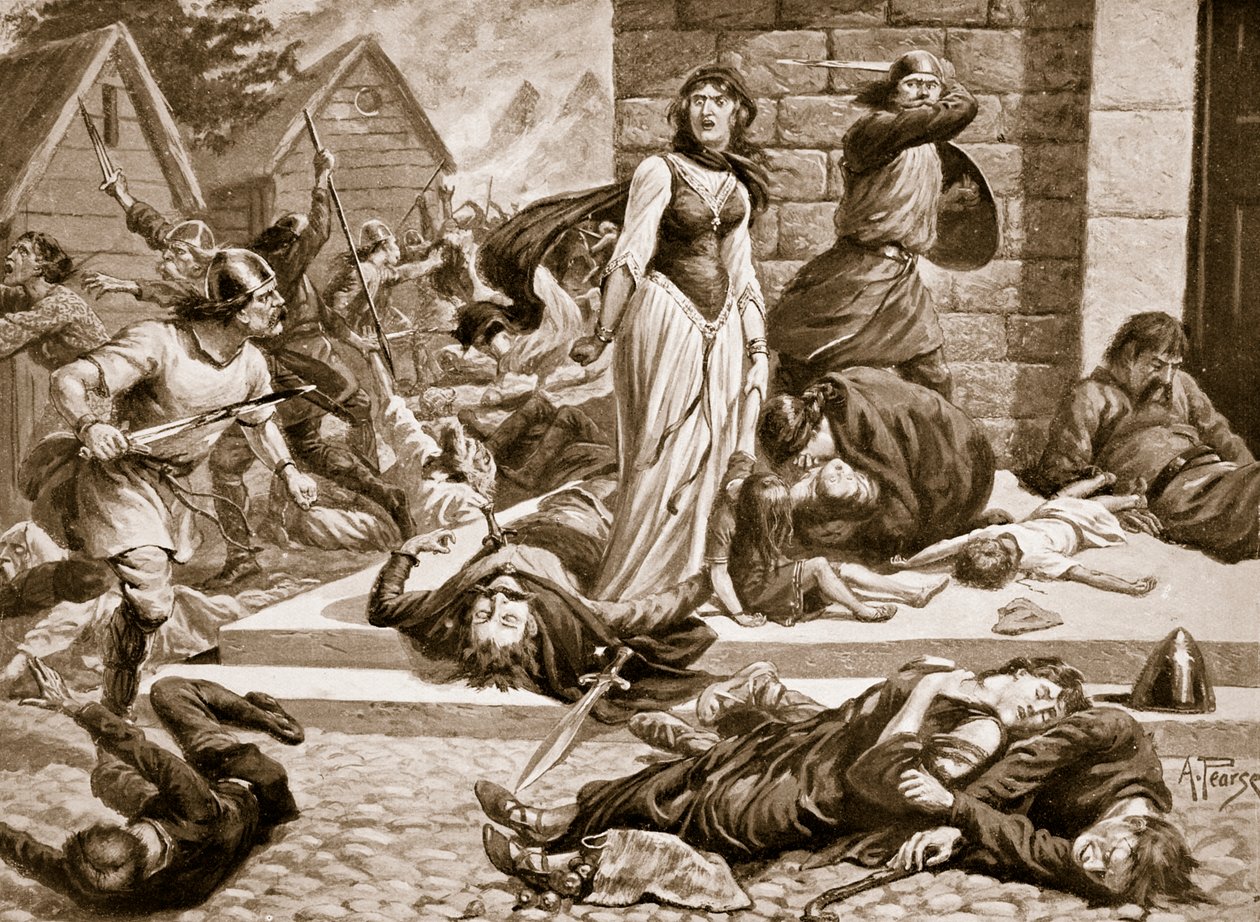Bloody Saturday
The San Brizio Massacre

Alfred Pearse, The Massacre of St. Brice's Day - Meisterdrucke
History has accustomed us to reading about enormous massacres and genocides, claiming the lives of hundreds or thousands of people, often belonging to the same cultural, religious, or geographical group. Norse history is no exception to such ruthless events. In this case, we refer to the so-called “Massacre of St. Brice’s Day,” which occurred on November 13, 1002.
It all began in 997 when Danish incursions became increasingly frequent along the borders of the English kingdom. The situation grew so dire that the intervention of the pope was requested to placate the Vikings. Nevertheless, the Norse continued to raid villages and conquer Saxon territories, extending their dominance until 1001.
By 1002, King Æthelred II of England, known as “the Unready” (968–1016), weary of the Danish presence in his kingdom, ordered the indiscriminate massacre of every Dane on English soil—regardless of whether they were men, women, children, or the elderly. He later justified this act in a royal charter from 1004: “Since it is fully agreed that all those who live in this country will know that a decree has been sent by me, with the advice of my leading men and nobles, that all Danes who have risen up in this island must be destroyed by a most just extermination, and so this decree was to be carried out unto death […].”*
Thus, on St. Brice’s Day, English soldiers took advantage of the fact that it was a Saturday—the traditional bathing day for the Norse—when they were distracted and unprepared for combat. The soldiers slaughtered every Dane they encountered, including Gunhilde, the sister of King Sweyn I of Denmark “Forkbeard”, and possibly her husband, Pallig, Alderman of Devonshire. According to another version, however, Pallig may have played an active role in the massacre as a man in King Æthelred's service.
In swift retaliation, King Sweyn I invaded England a few months later, in 1003, and eventually claimed the throne in 1013. Upon his death, the throne passed to his son, Cnut *“the Great,”* in 1016—the same year King Æthelred *“the Unready”* died.
Katherine Holman, La conquista del Nord I Vichinghi nell’Arcipelago Britannico, Odoya, 2017
John Cannon. The Oxford Companion to British History, second edition, Oxford University Press, 2015
2025-03-31
Salvatore Ciccarello
